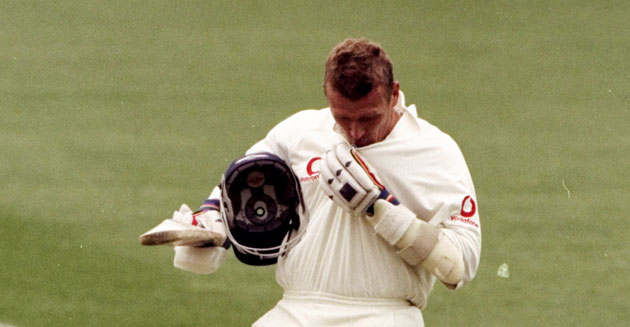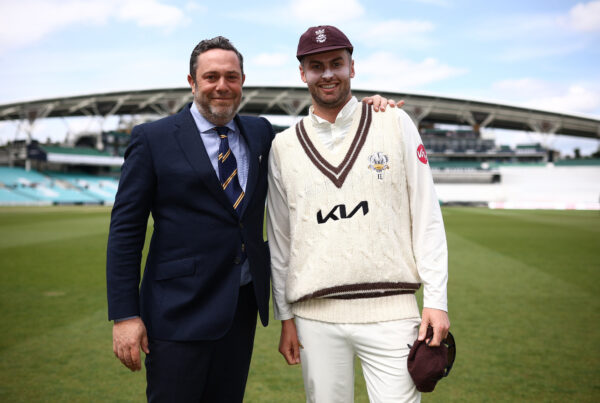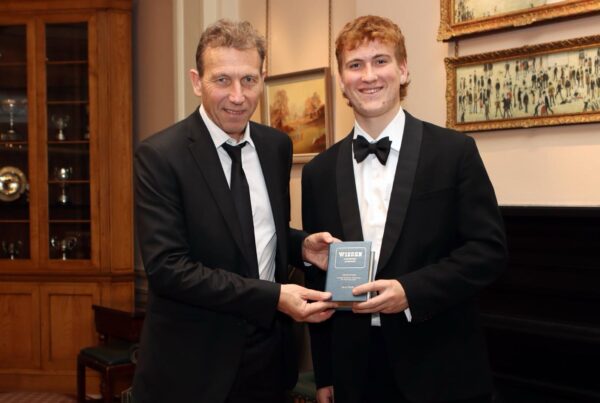Little matches the expectation which buzzes around Melbourne in the run-up to an Ashes Test at the MCG.
Regardless of how a series is poised, it’s impossible not to get caught up in the excitement around Victoria’s capital.
Melbourne Tests became bedded down as Boxing Day starts in 1974 and for many Victorians the idea of missing out on a day at the cricket, whether they actually like the game or not, is as unthinkable as drinking their beer at room temperature.
Not that a suntan is guaranteed, the city’s weather capable of defeating even the most well-equipped visitor and even more likely to result in a nasty cold. But it’s part of the charm of the place, as is a ground which can be reached on foot from the city centre in a matter of minutes.
If the massive bowl which makes up today’s MCG lacks the character of old, a trip to the museum illustrates how it looked when the first ever Test Match was played in March 1877, Australia winning by 45 runs. If Surrey left-arm spinner James Southerton was disappointed that his three wickets in the first innings went unrewarded, it was nothing to Ted Pooley’s feelings given he had been detained following an off-field incident in New Zealand and failed to make the match.
Southerton bettered that a week later, 4-46 helping to secure victory by four wickets.
Despite the 12,000 mile distance between the two countries, which took six weeks to complete by boat, series were crammed into the 1880s like modern day T20s, a good pair of sea legs as important as strong technique.
Read and Richardson in the limelight
After England had been beaten at The Oval in 1882, prompting the Sporting Times notice which announced the death of English cricket sparked the legend of the Ashes, an immediate return down under saw Surrey’s Walter Read top-scored with 75 in England’s 294 on the way to winning by an innings and 27 runs, winning the series 2-1. That provoked a group of ladies in Melbourne to presented England captain Ivo Bligh with an actual urn, which resides in the MCC museum.
For dramatic comebacks, the second Test of the 1894-95 tour takes some beating. Bowled out for 75 after being inserted, England dismissed the hosts for 123 with Tom Richardson – one of three Surrey players on parade alongside Bill Lockwood and Bill Brockwell – claiming 5-57. Skipper Andrew Stoddard’s 173 lifted his side to 475 all out before Richardson (2-100) and Brockwell (3-33) helped to sculpt out victory by 94 runs.
Richardson’s 6-104 from 45.2 overs proved instrumental in a six-wicket in the final Test which sealed an exciting 3-2 win. But the mighty fast bowler’s remarkable stamina was on the wane three years later, two Melbourne Tests inside a month yielding just one wicket as England were beaten both times.
Tom Hayward had enjoyed little success in the city over four Tests until opening up with 58 in England’s 185-run victory in the 1903-04 series, on the way to winning the second Test by 185 runs, following it with a duck in the second innings and another when they returned for the final match. Tonsilitis prevented him even getting to the middle second time round and Australia’s 218-run victory only narrowed the margin of defeat to 3-2.
His successor as Surrey’s lynchpin, Jack Hobbs, felt far more at home in the mighty arena, 83 on his first appearance in 1907-08 contributing to winning by one wicket. His Surrey colleague Jack Crawford’s 5-48 saw the hosts dismissed for 214 in the second Test and although Hobbs hit 57 in the reply, England were turfed out for 105. Crawford pouched three more victims in the second innings but both he and Hobbs made ducks as Monty Noble’s men secured their third win of the series on the way to a 4-1 triumph.
“The Master” was by no means finished with the MCG when the tables were fully turned on the 1911-12 tour. He missed out in the eight-wicket success of the second Test yet in the fourth put on 323 with opening partner Wilfred Rhodes – the highest stand for any wicket at the time in Test cricket – in lifting the tourists to 589, winning by an innings and 225 runs.
War fails to stop Hobbs run glut
It was nine years before England returned to action at the ground – thanks to the First World War – but despite being now being 38-years-old, Hobbs made 122 and 20 in his side’s defeat by an innings and 91 runs. Warwick Armstrong’s Australians were way too strong and went on to win all five matches, Surrey also represented by Percy Fender and wicketkeeper Herbert Strudwick.
At least England had the compensation of winning once when they returned in 1924-25 and Hobbs’s thirst for the Victorian capital remained unslaked, his 154 accompanying 176 from Herbert Sutcliffe – the most famous of all his opening partners – to put on 283. Sutcliffe scored another century in the second innings but even that was insufficient to prevent defeat by 81 runs. The solitary victory came in the fourth Test back there and again it was Sutcliffe (143) and Hobbs (66) who set the tone for winning by an innings and 29 runs after amassing 548.
Hobbs wasn’t finished yet. Back he went in 1928-29, two decades on from his maiden Ashes trip, relishing a role in Percy Chapman’s men sweeping up 4-1 to retain the Ashes. Hobbs hit 20 and 49 as the third Test was inched by three wickets and marked his farewell appearance there in the fifth – Australia winning by five wickets – by stroking 142 and 65. It wasn’t just Oval regulars who regarded him as “The Master”.
Douglas Jardine had opened with his illustrious county colleague in that match and was in charge for the notorious 1932-33 tour, although boiling point in the Bodyline saga was some way off at that stage. England had won at Brisbane, Bradman having been absent and then making a duck on his return before cracking a century in the second innings. That confirmed to Jardine, who made just one run in the match and rued defeat by 111 runs, that his controversial tactics ‘leg theory’ would need to be employed to achieve success.
Bedser shoulders post-war burden
When England made their first visit down under after the Second World War in 1946-47 – a decade on from the last trip, when they had gone from 2-0 to lose the series 3-2 thanks to Bradman’s resurgent side – they were facing one of the strongest teams in Test history. Alec Bedser had only made his international debut the previous summer and found himself spearheading the tourists’ attack, reaching the third Test in Melbourne having lost the first two by an innings.
One of his country’s greatest bowlers was beginning to get the measure of conditions, six wickets in the match from 64.4 overs of hard toil helping to secure a draw, although the series was lost 3-0.
Bradman’s retirement closed the gap between the sides, not that the 4-1 victory to the hosts in 1950-51 mirrored that. Beaten narrowly on a rain-affected pitch in the opener at Brisbane, they were to lose agonisingly by 28 runs at the MCG in a match broken by two days off for Christmas. Bedser and Trevor Bailey’s four-wicket hauls bowled out the hosts for 228 but 197 was a tame response. The two opening bowlers struck twice each again in the second innings but, needing only 179 and three days to get them, they failed to make it.
Facing a whitewash when they returned for the final match, Freddie Brown’s men struck back to win by eight wickets – their first win over Australia since the war, EW Swanton calling his book on the tour Elusive Victory – and it was Bedser’s 10-95 in the match which led the bowlers while Reg Simpson’s 156no dominated the batting.
England’s reliance on Bedser had ended by the 1954-55 tour. Dropped after their mauling in the first Test at Brisbane, he watched as Frank Tyson bowled Len Hutton’s men to a series-levelling win at Sydney but was confident he could flourish again on Melbourne’s pitch.
But Bedser was left out again and an exciting low-scoring match saw a 40-run deficit on first innings. Peter May was Surrey’s sole representative in the side, his commanding 91 ensuring Australia were set 240 before ‘Typhoon’ Tyson’s 7-27 rushed them out again on the way to a 3-1 success.
May’s side in 1958-59 were expected to claim a fourth successive Ashes series. Rocked by an unexpected reverse in the opener at Brisbane, England were soon 7-3 and grateful when their captain cracked 113 out of 259 all out. An attack including three of the bowlers who ensured Surrey had just won their seventh successive County Championship title – paceman Peter Loader plus spinners Jim Laker and Tony Lock – confined the reply to 308 despite Neil Harvey’s 167, Loader’s three wickets supporting Brian Statham’s 7-57.
Left-arm speedsters Alan Davidson and Ian Meckiff – whose controversial action attracted great suspicion – demolished the tourists for 87 and an eight-wicket margin sent Richie Benaud’s combination on the way to regaining the Ashes 4-0.
Edrich and Barrington relish conditions
Winning by seven wickets at the MCG on the Ted Dexter’s tour in 1962-63 was only enough to share the series 1-1 and England’s return three years later was equally frustrating, although two Surrey men had happy memories of the Tests there. John Edrich’s typically patient 109 – backed up by county colleague Ken Barrington (63) plus Colin Cowdrey’s 104 – engineered a 200-run lead on first innings. The hosts batted out that match for a draw and when battle was rejoined for the final Test, reached at 1-1, Edrich made 85 and Barrington hit 115 in England’s 485-9dec in another match which fizzled out.
One of the most famous Melbourne Ashes Tests, in 1970-71, is famous because it didn’t happen. The fickle Victorian weather meant not a ball was bowled and it spawned the idea of the one-day international on what should have been the fifth day. Edrich’s 82 gained him the man-of-the-match award although his side lost.
Edrich’s stickability was in evidence on Boxing Day 1974, his 49 key in seeing off a marauding attack led by Dennis Lillee and Jeff Thomson which had put Australia 2-0 up. It offered England some succour, holding their own in a nerve-stretching draw which saw Ian Chappell’s men finish eight runs short with two wickets left.
Australia were 4-0 up, having recovered the Ashes, when the sides returned for the final Test and Edrich displayed typical courage, having had his ribs broken two matches earlier by Lillee, to make 70 in a pyrrhic victory by an innings and four runs.
Jack Richards played eight Tests for England and the Surrey wicketkeeper’s highlights came on the victorious Ashes tour of 1986-87. Ahead after a rare win at Brisbane, followed by two draws, they rolled Australia for 141 thanks to Gladstone Small and a half-fit Ian Botham claiming five wickets apiece. Cornishman Richards backed them up superbly with five catches, one a spectacular take racing back towards the boundary to dismiss Craig McDermott. It sped Mike Gatting’s tourists towards an innings and 14-run triumph which was completed inside three days.
Stewart stands tall for century
Since then successes at Melbourne have mirrored England’s lowly fortunes down under but the highs have certainly been memorable.
Alec Stewart’s memories of the ground are mixed, making 79 in his first appearance there in 1990-91 – it ended in an eight-wicket defeat – and suffering a tour-ending broken finger there four years later in another trouncing. When the Surrey man returned as captain in 1998-99 his side were already 2-0 down after three Tests with the Ashes gone. Giving up the gloves to Warren Hegg and returning to open the innings, Stewart lost Mike Atherton and Mark Butcher for ducks to be 7-2 on a pitch zipping around after being covered for 36 hours while Boxing Day’s play was drowned out.
His 107, made against an attack led by Glenn McGrath, was a gloriously counter-punching innings and he added 52 in the second innings but a target of 175 still did not look enough, especially when the chase reached 103-2. Dean Headley’s 6-60 changed all that and Stewart looked the happiest man in Australia when an extraordinary victory was grasped by 12 runs.
Another Surrey player who will never forget Melbourne is Chris Tremlett, whose 4-26 helped annihilate Australia for 98 on Boxing Day 2010, home spectators departing at the same rate as their batsmen as the scene was set for an England victory by an innings and 157 runs in a 3-1 series win.
Otherwise memories have been painful in recent times and Joe Root’s side, already 2-0 down, have a mighty battle on their hands to avoid surrendering the urn this week.









